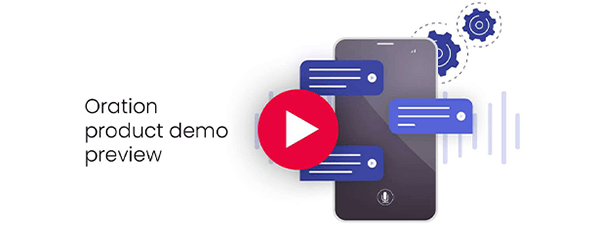What are the benefits of customer self-service?
The big question is, how much do customers want to self-serve? There are plenty of reasons why implementing a customer self-service strategy could be a worthwhile investment for your business. A McKinsey study shows that while companies with more digital offerings have a higher customer satisfaction rating, digital interactions including self-service account for a growing share of all customer-initiated contact. As many as 86% of respondents according to another survey said they preferred using self-service tools for specific tasks than speaking with a representative. Aside from feeling completely in control of a task or resolution, customer self-service satisfies customers’ appetite for fast response times and convenience. In fact, speed and convenience are two of the most important elements of a positive customer experience according to 80% of consumers. With self-service options, customers don’t have to wait on hold to speak to a representative and they can dive straight into a task whenever they like, without having to work around customer service hours or peak times. And all these benefits should be considered a shared interest between you and your customers. By implementing customer self-service tools, tasks that customers can perform themselves are diverted away from your customer service team, giving them more time to focus on the most complex customer queries or even strategic responsibilities. Customer self-service options could also help you save costs by streamlining your internal customer service operation as well as boost efficiency because less staff are required to service more customers.What are the most common customer self-service channels?
- Website Often referred to as a customer self-service portal, brand websites can be highly functional and comprehensive knowledge bases serving a variety of needs for customers. Through a website, customers can access web-based self-service systems for specific tasks including accessing and editing account details, making requests, and changing product or service preferences. Easily added to existing websites using SaaS technology, companies can integrate a range of self-service tools using customisable templates that allow them to maintain the look and feel of their entire site.Another way in which a website can help customers self-serve is through a content hub or blog page. A content hub can be developed to offer a wealth of useful resources which are well-categorised, up to date, and easily searchable, such as ‘how-to’ articles and videos, pod casts, infographics, e-books, and whitepapers.
- IVR An IVR system, especially one that’s capable of recognising caller intent using AI-powered speech recognition technology, is one of the fastest and most effective ways for customers to self-serve. Offering the option to pick up the phone and reach a resolution without waiting for an agent or having to navigate online resources is a real winner when it comes to boosting customer experiences, especially among less digitally savvy customers.Some of the many tasks that could be completed using an IVR system include making bookings and seeking appointment confirmations, checking account status and balances, finding out store and office locations, and hearing product information or stock updates.
- SMS With the vast majority (if not all) of your customers owning a mobile phone, it’s not surprising SMS technology is making a comeback in the customer service space. Already a popular channel for delivering marketing communications and notifications, SMS can also be used to support customer self-service through IVR systems.SMS can be a huge help when the information your customers are seeking to self-serve is difficult to verbalise or hard to remember, such as timetabling and scheduling information, map locations, and links to online resources. With the right IVR solution, you can give your customers the option to receive the information or visuals they need via SMS, so it’s always on hand and easy to access without calling again.
- Chatbot Using the power of AI, chatbots are one of the newest developments in the self-service space – and they’re getting better all the time. Chatbots are the perfect alternative for customers looking for a quick answer or resolution at times where it’s either not possible or preferable to make a call or search online.By simulating a human conversation, usually via online messaging, a chatbot is programmed to recognise common customer queries from their natural language. Once the correct purpose of the customer contact has been established, the chatbot can determine whether it’s possible to match the intent with an automated solution via the chatbot or even deflect to a webpage or other self-service portal. For example, a customer might say they’re contacting about cancelling a subscription, in which case, a chatbot could gather the customer’s personal information and account details before initiating the cancellation process.
There are many examples of how customer self-service can enhance the customer experience by giving people more independence and the choice to receive information in their preferred format. But the question remains if you have a self-service portal, do you still need customer service representatives? Customer service representatives should always be considered a crucial support to your overall customer experiences – the most important takeaway is that customer self-service can empower both your business and your customers to do things much more efficiently. Download our Panasonic Australia Case Study and learn how they reduced contact centre operation costs by 25%.
How can Oration advance your contact centre functions? Oration offers automated self-service to bring efficiency to the next level. You could be looking at reducing the number of calls your agents receive by typically up to 30% by enabling callers to help themselves. Without having to launch into any costly custom development projects, Oration allows you to implement pre-packaged speech-driven micro-applications to facilitate self-service for queries such as checking the balance of an account, changing personal or payment details, or finding out your nearest store location and opening hours.
The application can be adapted to be specific for your business. Better still, because you’re not offering self-service through a tiered menu like traditional systems, you can have any number of self-serve options which also helps to make callers feel more engaged and less constrained by the system.







